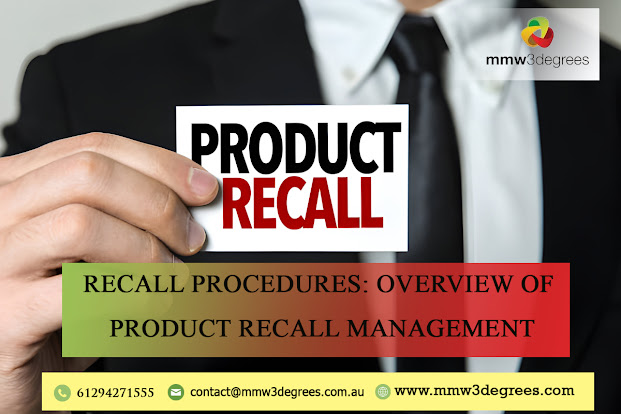Recall Procedures: Overview of Product Recall Management
In the complex landscape of product management, understanding effective recall procedures is paramount to ensuring consumer safety and maintaining brand integrity. This comprehensive guide provides an in-depth exploration of the recall process, recall management, and the specific nuances of product recall in Australia.
The Importance of Recall Management
When a product poses a risk to consumers, a swift and well-executed recall process is essential. Recall management involves systematic steps to retrieve defective or potentially harmful products, safeguarding both consumers and the brand's reputation. Timely and transparent communication is key to navigating these situations successfully.
Product Recall Procedures: A Step-by-Step Guide
1. Identification of Issue:
The first step in recall procedures is identifying the issue. This involves thorough testing, customer complaints, or reports of adverse effects.
2. Assessment of Risk:
Evaluate the potential risk posed by the product. This step is crucial in determining the urgency and scope of the recall.
3. Communication Strategy:
Craft a clear and concise communication plan. Inform affected parties, including consumers, distributors, and regulatory bodies, about the recall.
4. Product Retrieval:
Execute the recall by implementing strategies for the retrieval of the affected products from the market.
5. Consumer Support:
Provide support to affected consumers, offering replacements, refunds, or relevant solutions to mitigate inconvenience.
6. Regulatory Compliance:
Ensure compliance with local regulations, especially when dealing with product recalls in Australia. Adherence to specific guidelines is critical.
Recall Management: A Proactive Approach
Effective recall management goes beyond reacting to a crisis; it involves proactive measures to minimise the risk of recalls. Regular quality control checks, stringent testing procedures, and continuous monitoring of consumer feedback are integral components of a proactive approach.
Product Recall in Australia: Navigating Regulatory Requirements
Australia has stringent regulations governing product recalls to protect consumer interests. Understanding the legal obligations and reporting requirements is fundamental for a successful product recall in Australia. Failure to comply with these regulations can result in severe consequences for the business.
Best Practices for Successful Recall Management
1. Swift Response:
Act promptly when an issue is identified to minimise potential harm and demonstrate commitment to consumer safety.
2. Transparent Communication:
Maintain open and honest communication throughout the recall process to build trust with consumers and stakeholders.
3. Comprehensive Documentation:
Keep detailed records of the recall process, including communication, actions taken, and outcomes, for future reference and analysis.
4. Continuous Improvement:
Conduct post-recall evaluations to identify areas for improvement in processes and prevention strategies.




Comments
Post a Comment